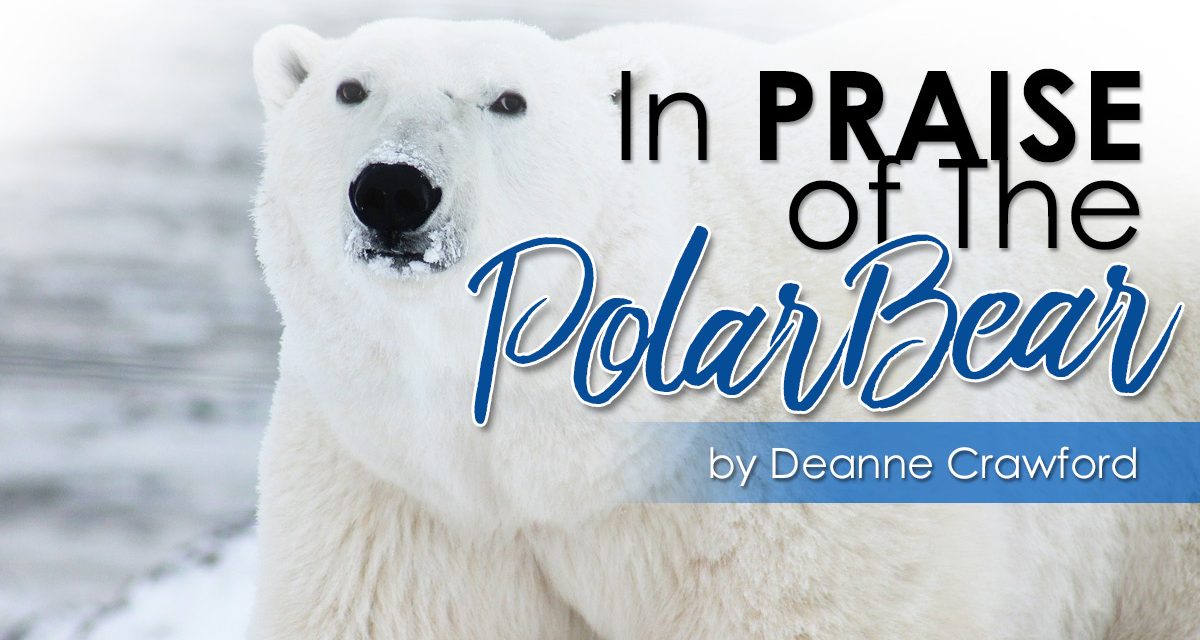Considered one of nature’s most huggable mammals, the polar bear is a marvelous creation. At birth polar bear cubs weigh about 16 oz and measure 12” in length. Reaching adulthood, they will stand nearly 10 feet high and weigh around 1,000 lbs., becoming one of the largest known mammals. Together let’s discover more about this magnificent marine mammal!
Found throughout the Artic, Earth’s most northern point, the polar bear is one of the Arctic’s most recognizable residents. If you have a globe, find the artic region. The Arctic is identified as the area above the Arctic Circle, which is an imaginary line circling around the top of the Earth. Within this imaginary circle is the Arctic Ocean, and parts of Canada, Russia, the USA, Greenland, Norway, Finland, Sweden, and Iceland. Learn more about the Arctic circle.
Most people recognize the thick white fur of the polar bear. Would you be surprised to learn that the polar bear’s fur is not really white? It’s true! Polar bear fur is clear and transparent! Tech Insider explains it here. Having transparent, hollow fur helps polar bears in numerous ways. Ask children how this trait might help a polar bear. Transparent fur allows sunlight to reach the bear’s black skin, which helps warm the polar bear. The fur appearing as white also camouflages the polar bear. They will blend in with the snow and ice, which helps them hunt for food and remain unseen by predators. Finally, the hollow fur acts as a life preserver, helping the polar bear float longer, allowing them to swim miles searching for food. Learn more about polar bear water skills.
Like humans, the polar bear is warm blooded, which means their body temperature is around 98 degrees Fahrenheit. An average artic winter ranges from 20-30 below zero. Do you wonder how the polar bear maintains its body temperature? Yes, the thick fur and black skin to absorb sunlight is helpful, but polar bears also are well insulated by a 4-inch layer of fat (called blubber)! Demonstrate how a fat layer insulates with this simple activity. (or check it out on YouTube®). There are other special traits that help the polar bear survive. Polar bears have very large paws that act like snowshoes spreading out their weight evenly for balance. They also have thick black pads covered with small bumps (papillae) on the soles of their feet. Papillae help them walk across the snow and ice safely, without slipping and sliding—that is once they get their confidence up! Watch this adorable PBS clip showing baby cubs encountering snow for the first time. Learn more about how the polar bear survives from Polar Bears International.
Now that we know where polar bears live, let’s look at how they live. Many animals thrive in groups, but the polar bear mostly lives alone. The only time polar bears spend time together is for a short mating period and the 2 to 3 years a momma cares for her cubs. Adult polar bears may make a temporary winter shelter to escape severe weather; it is only pregnant females that make a den for longer dwelling. Beginning in early winter, female polar bears build pregnancy dens in a snowbank or hillside. Female polar bears will give birth in the den to 1 to 3 cubs. The cubs are born blind and are totally dependent on mom. Their eyes open by the end of the first month. The momma and cubs will stay in the den until late March. This time is necessary for survival. At birth, polar bears have very little fat to keep them warm in the harsh Arctic climate. They will each weigh roughly 1 lb. at birth. The high fat content of their mother’s milk helps them grow rapidly. Mothers and babies remain together nearly 3 years until it is time for the female polar bear to mate again. Learn more about the polar bear life cycle here and watch a mother polar bear and her cubs inside the den.
We have covered a lot of information today. Spend a few minutes reviewing at National Geographic Kids. Encourage children to share what they learned about polar bears using an acrostic poem. This template is a great guide. Happy learning! ~ Deanne





